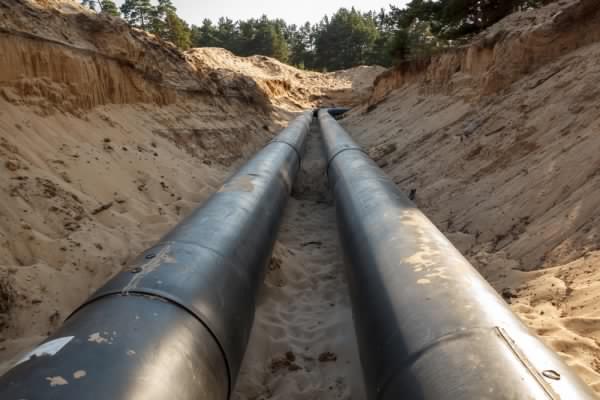
Guide to Directional Drilling
At JMH our focus is providing excellent directional drilling services as well as trench and mole ploughing and guided auger boring. In this guide, we are going to take you through how directional drilling works and how different techniques are used for different formations. We’ll also talk a bit what we do so keep reading to find out more.
The Development of Directional Drilling
When horizontal directional drilling was developed, it revolutionised the way underground pipeline installation and repair was handled. First, there is no need to excavate. Next, with the use of precision machines, straight and curved pipes can be installed with ease while avoiding underground and above ground obstructions. It is also less expensive and more efficient than traditional methods as well as allowing the well’s impact to be more environmentally friendly. This is primarily the reason why industries such as telecoms, water, rail, and others rely on directional drilling services.
How Does Horizontal Directional Drilling Work?
The technology behind horizontal directional drilling is the main reason why it works so well. With the help of guidance systems and advanced steering tools, our experienced navigators are able to achieve incredibly accuracy in adding the pipes to the ground. To achieve this, they need to do a lot of planning to ensure that the path is correct and from there they can reach long distances with ease. Horizontal drilling is just one type of directional drilling and it takes place when the wellbore exceeds 80 degrees as well as including drilling upward at a 90-degree angle.
Different Techniques Required
Depending on the type of formation in the ground, we need to tackle some of our projects in different ways. In a soft or alluvial formation, we remove the formation using a high-pressure fluid in the jetting assembly. The hydraulic pressure and the bend is then navigated using the steering tool which is communicating to the navigator above ground. After this, the driller then continues to rotate the drill and finishes the project.
In formations that are a little harder, we tend to employ some different tactics. We choose not to use a jetting assembly, instead, replacing it with a drill motor. This can then use hydraulic pressure to rotate and let the navigator continue to drill in the right direction without any issues. At this point, the drill string is then rotated and the drilling can continue as normal after navigating the bend.
Throughout all of our techniques, we make adjustments to the steering based on the data that we gather throughout the process. We always make sure that we follow the data to ensure that we can navigate any bends better in the future.
Benefits of Directional Drilling
Some of the benefits of directional drilling include less disruption, lower cost and less soil contamination. You can be sure that you will receive faster installation than other types and the pipes that we use will be more likely to last longer as this type of drilling is extremely durable.
Why Choose JMH?
At JMH, we always make sure that we use any sort of technological advancements to make our services better for our customers. We’ve been around since 1997 so we know how to navigate our modern fleet well. Our directional drilling rigs are some of the best out there and they range from 3 tonnes to 50 tonnes of pulling force. When you choose us, you will know that there will be minimum disruption caused to the general public because of the impressive horizontal directional drilling technology that we use.
